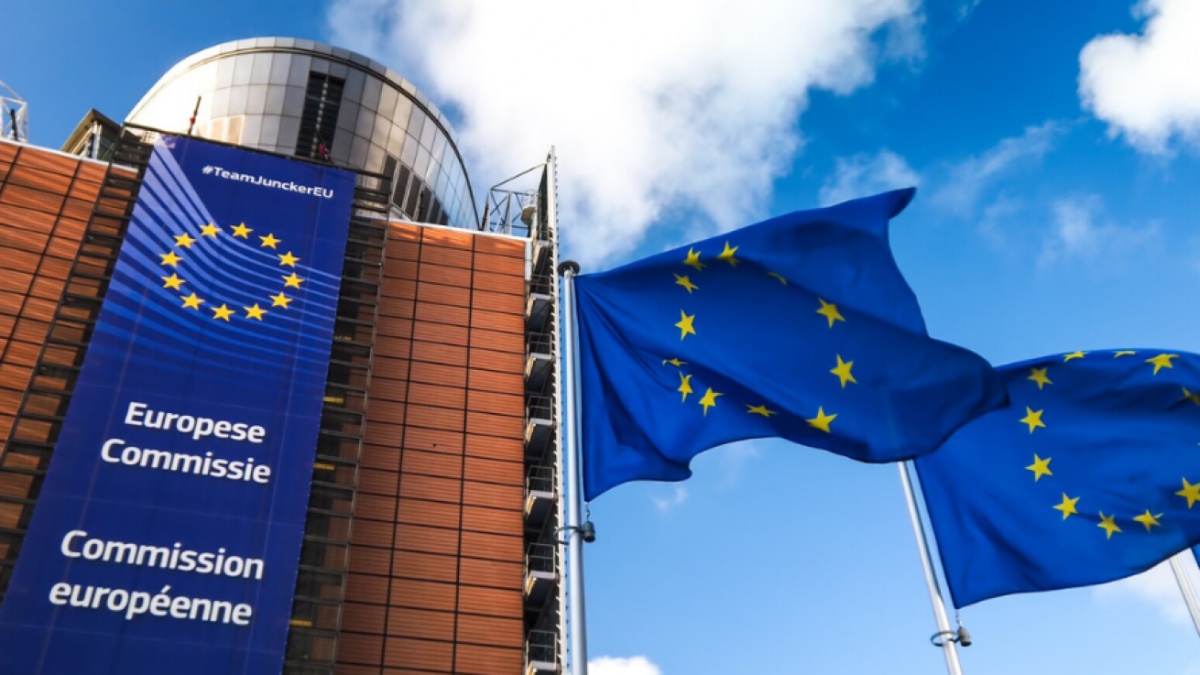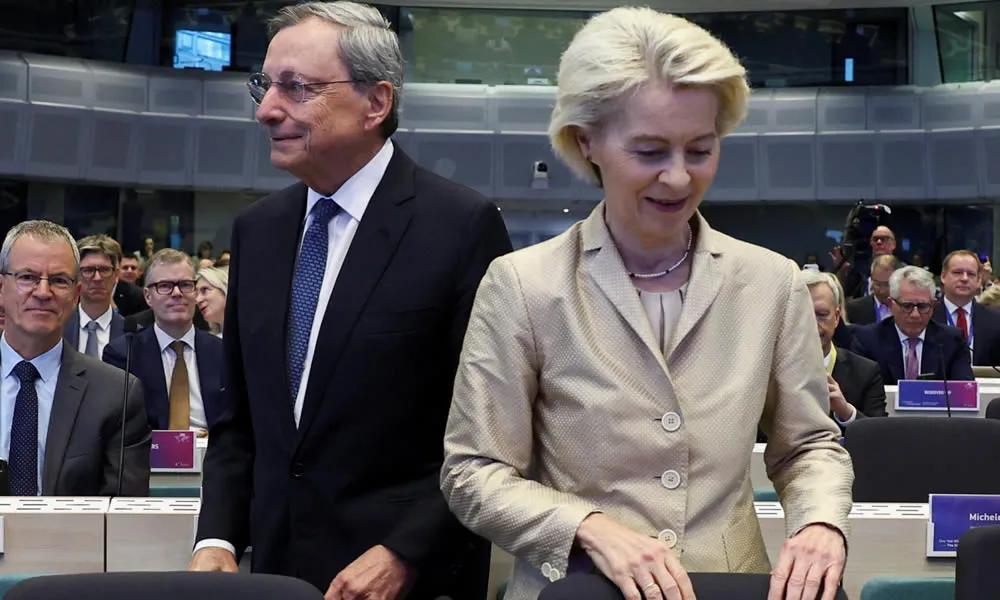The European Union and its member states face a turning point in their economic trajectory, amid rapid global shifts and a move towards multipolarity. Throughout the past week, Brussels hosted a series of events inside and outside the institutions, yet the speech that drew the most attention was delivered by Mario Draghi. Speaking at a European Commission conference on the future of competitiveness, the former Italian prime minister criticised the slow pace at which the EU is implementing the recommendations in his report, published a year ago. The Commission describes that report as the EU’s competitiveness compass, noting that 90% of the Union’s own report draws directly on Draghi’s most pressing proposals, while more than €1 trillion has been mobilised for innovation, clean technologies and security.
Caught between China and the United States
Draghi’s address underscored the pressure the EU faces between China and the United States. ‘Dependence on the United States in defence is one reason we had to accept a trade deal largely on American terms,’ he argued, while dependence on critical inputs from China has constrained Europe’s ability to prevent Chinese overcapacity from flooding the European market.
Three priorities for autonomy
According to Draghi, who also served as president of the European Central Bank, the EU must focus on three priorities to achieve greater strategic autonomy and stronger growth. The Union should close the innovation gap in advanced technologies, set a clear path to decarbonisation, and reinforce economic security.
Commission response and next steps
European Commission president Ursula von der Leyen highlighted EU achievements, including efforts to cut red tape and advance artificial intelligence, and urged member states and the European Parliament to accelerate the implementation of the relevant agendas. She said the strategy for the next five years includes measures to strengthen the single market, investment in clean technologies, and actions to reduce energy costs.

‘Europe at a turning point, invest, innovate, lead’
At a Euronews event titled ‘Europe at a Turning Point, Invest, Innovate, Lead’, which Politis attended, speakers stressed the need to speed up growth and innovation, with emphasis on cutting bureaucracy, boosting regional development and tackling skills shortages. They warned that without decisive moves, Europe risks falling behind not only the United States and China, but also emerging economies such as India. Among the ideas tabled, Dr Antonios Nestoras, the Greek head of the European Policy Innovation Centre, said Europe could fund mobile research and academic posts that move freely across member states in order to compete with US universities and, by extension, the United States in research. ‘Either we design the future here, or we accept what will be written in the United States and China, with Europe becoming an open museum of the past,’ he said. Massimo Andolina, president of Philip Morris Europe, called for a reduction in bureaucracy so that the Commission becomes ‘wind in the sails’ of the European economy, noting that the company invested €289 billion in Europe over the past five years to drive further innovation. Suzana Karp, co-founder of CleanTech for Central and Eastern Europe, focused on regional policy, pointing to weaknesses in Brussels’ approach. She said only 9% of recent European Investment Bank lending has gone to Central and Eastern Europe, despite growth around 3%, an imbalance that undermines convergence and the region’s potential.
What the numbers say
Several indicators help compare growth and innovation across the EU, China and the United States. The International Monetary Fund’s latest data, from April 2025, put real GDP growth at 4% in China, 1.8% in the United States, and 1.2% in the EU. On research and development, OECD figures for 2023 show R&D spending at 2.1% of GDP in the EU, 3.45% in the United States, and 2.6% in China. On quality of life, the UN’s Human Development Index for 2023 stands at 0.938 in the United States, 0.915 in the EU, and 0.797 in China, with one as the maximum. These figures suggest that, despite China’s gains, European countries and the United States still lead on human development outcomes.
Why the social model still matters
What sets Europe apart is the depth of its social policy. Although the welfare state in some member states has come under pressure over the past two decades, due to fiscal constraints and austerity, the EU continues to place political weight on social protection. Europe may lag in headline growth or certain innovation metrics, yet it sustains quality through public health systems, public services, collective arrangements and environmental policies.
Finding the balance
The EU, with all its flaws and imperfections, offers social protection, and must find a balance between growth and innovation, without unsettling its citizens. Europe can again become a centre of ideas, society, culture and the economy, within a stable and peaceful framework.
